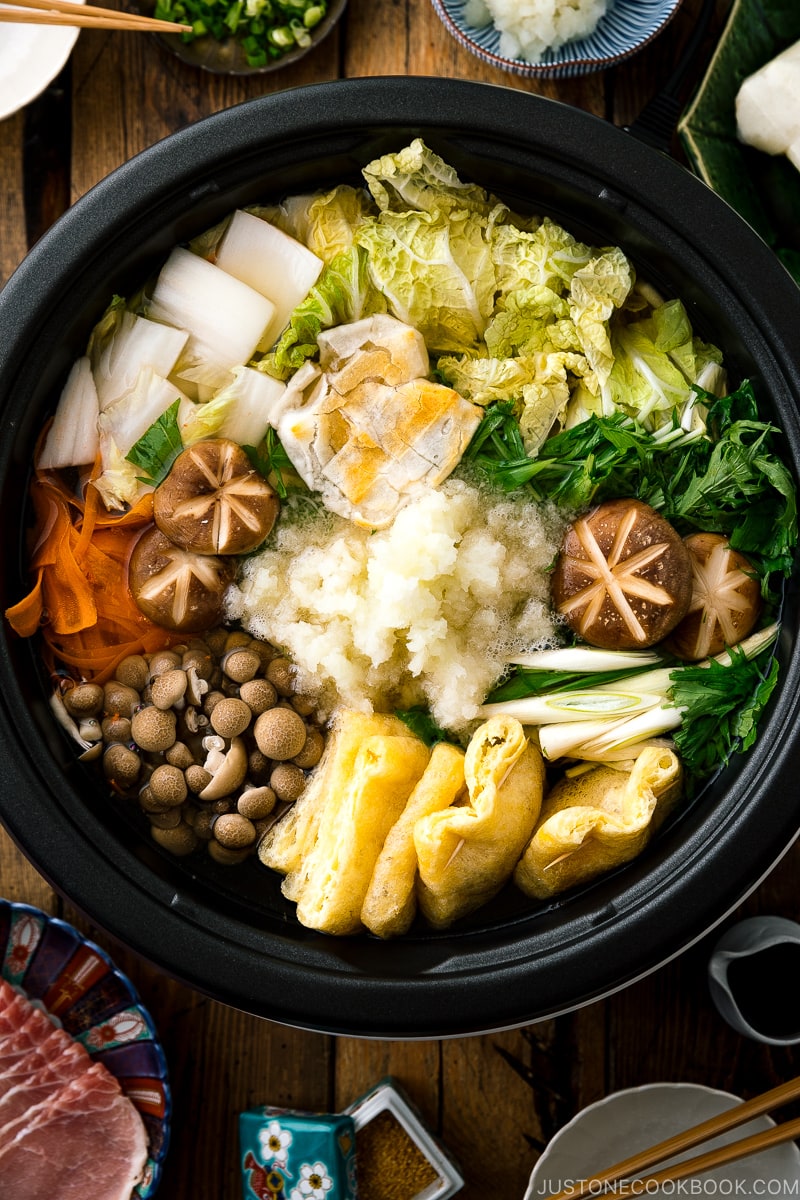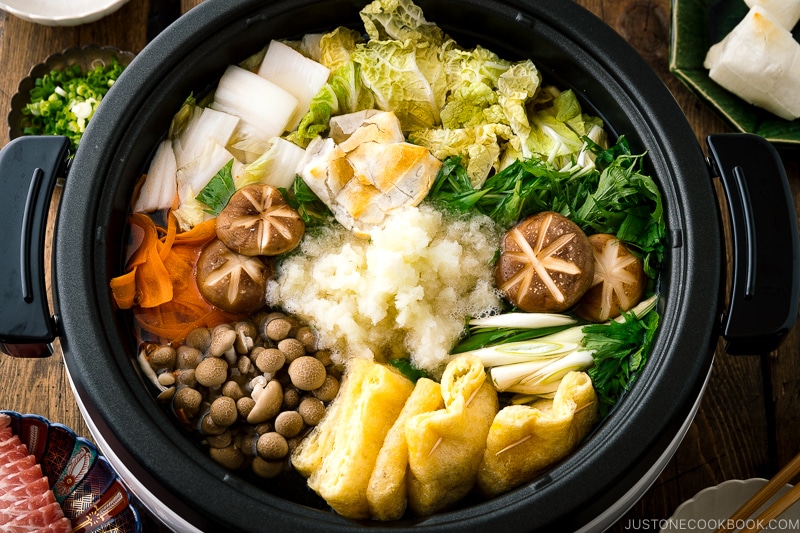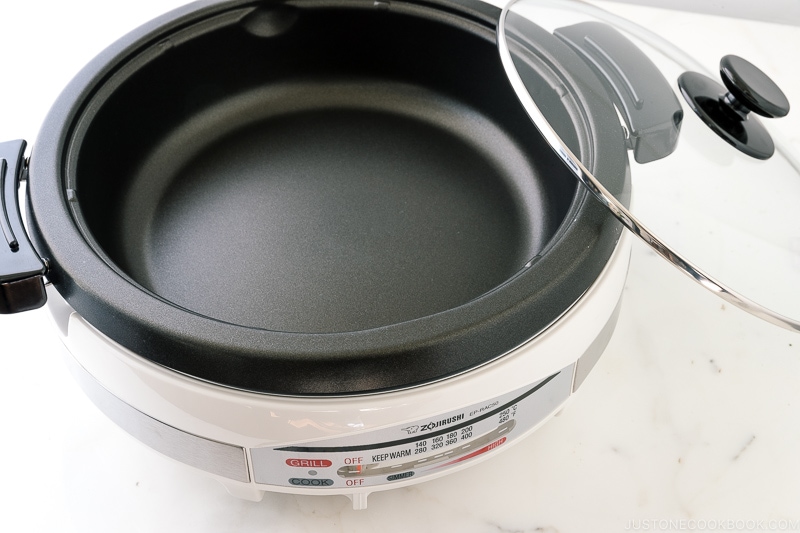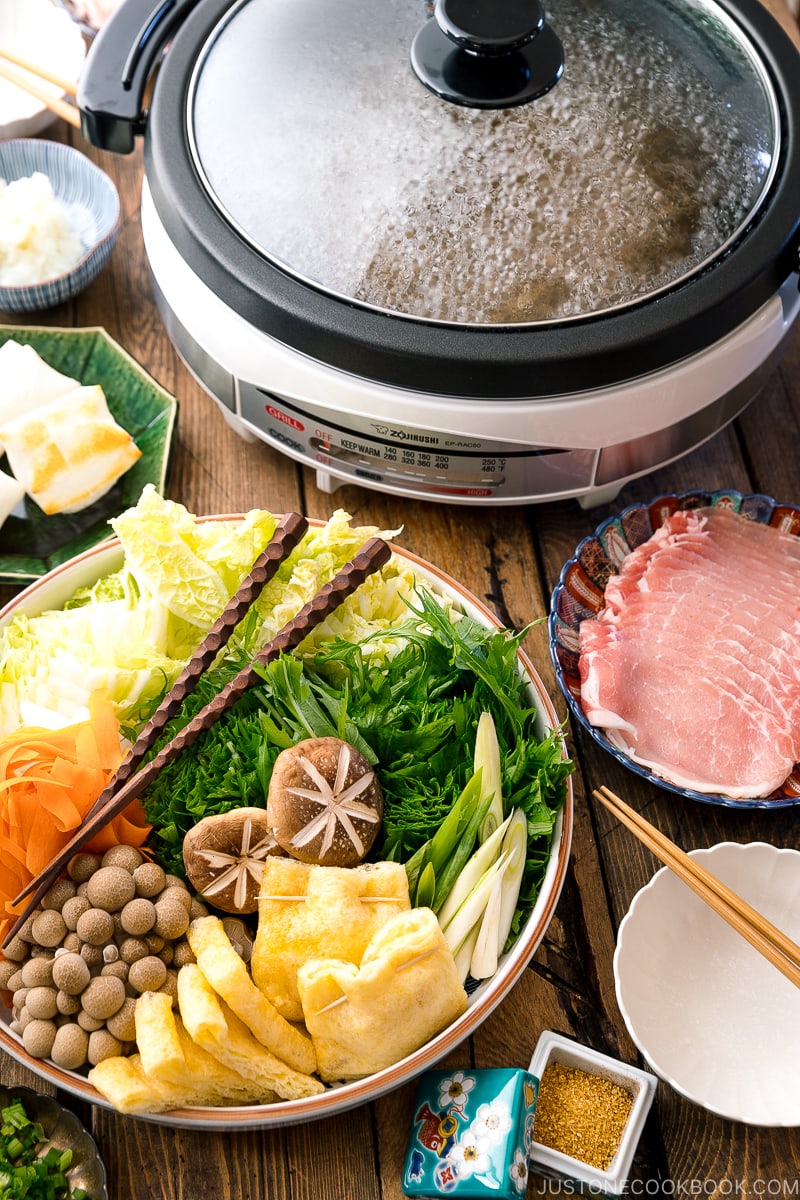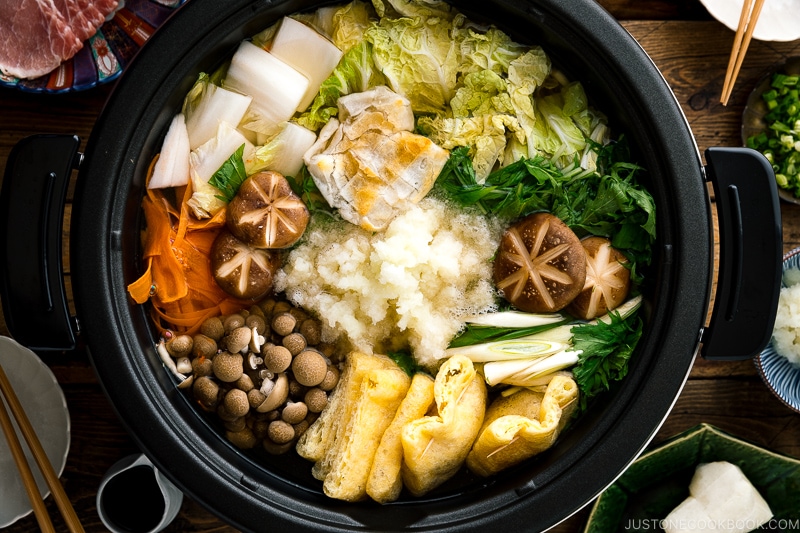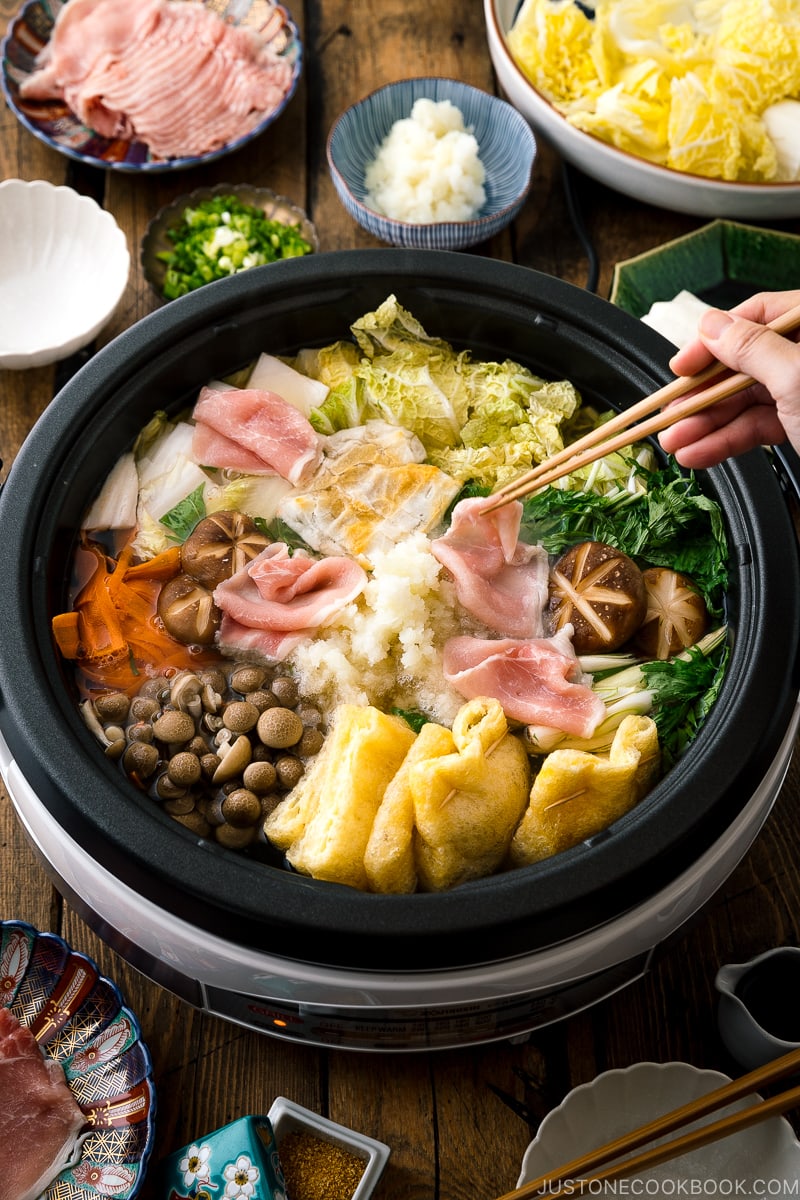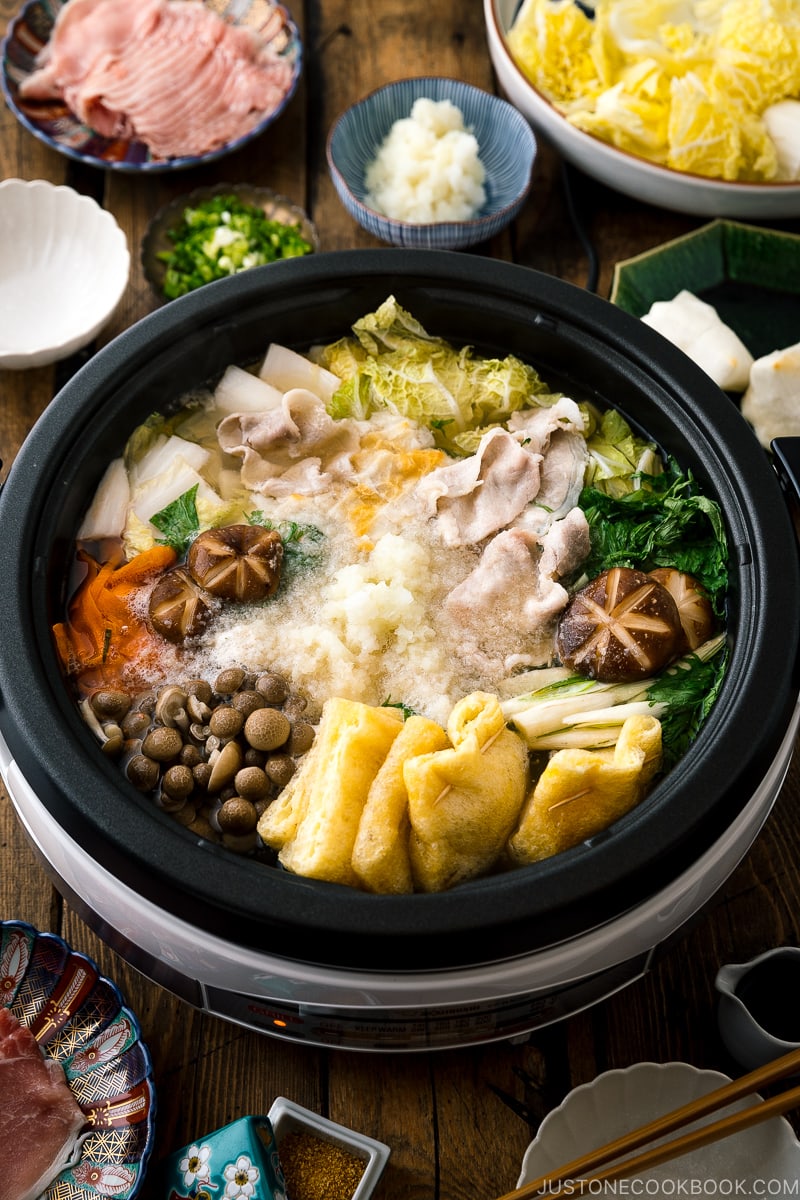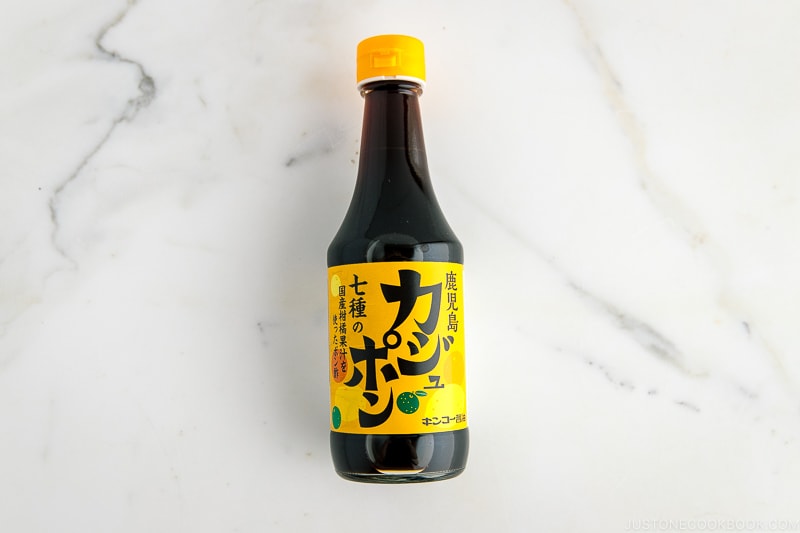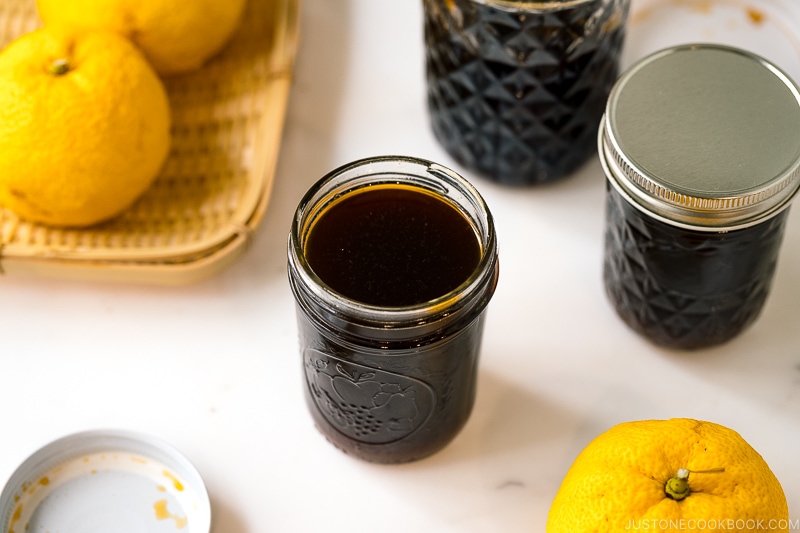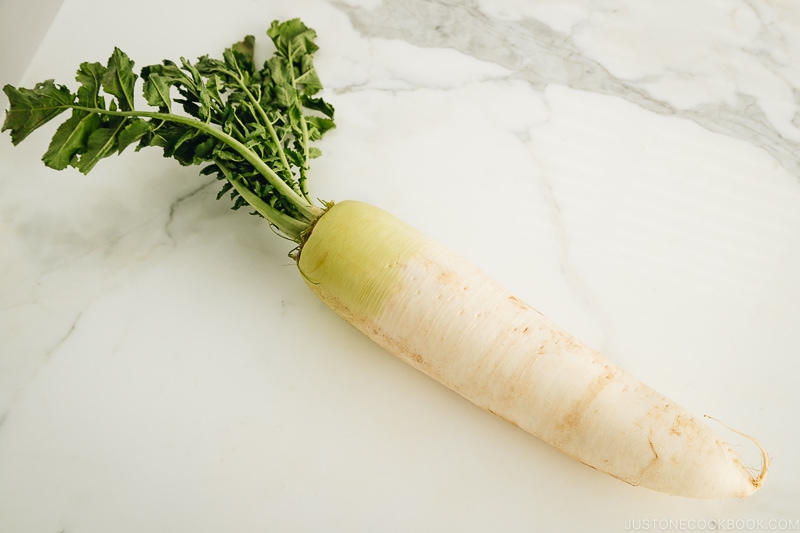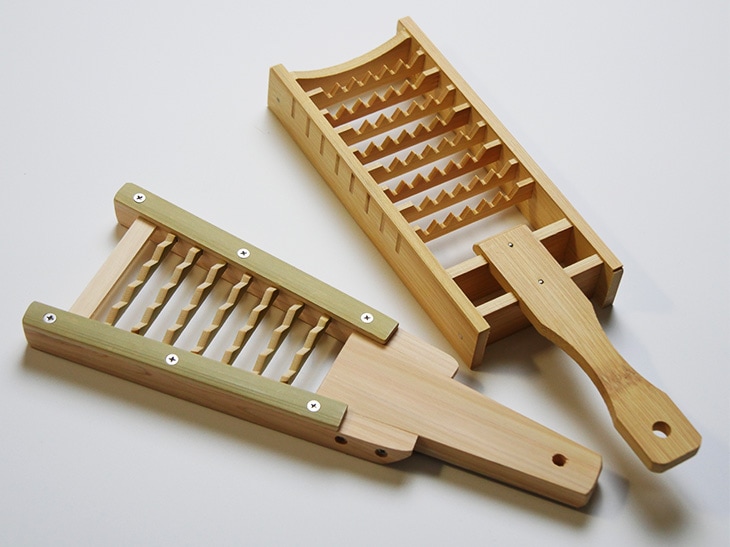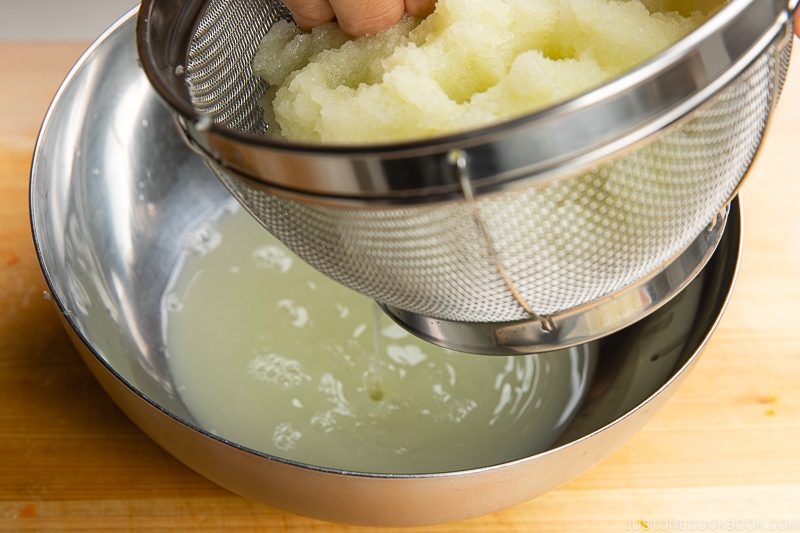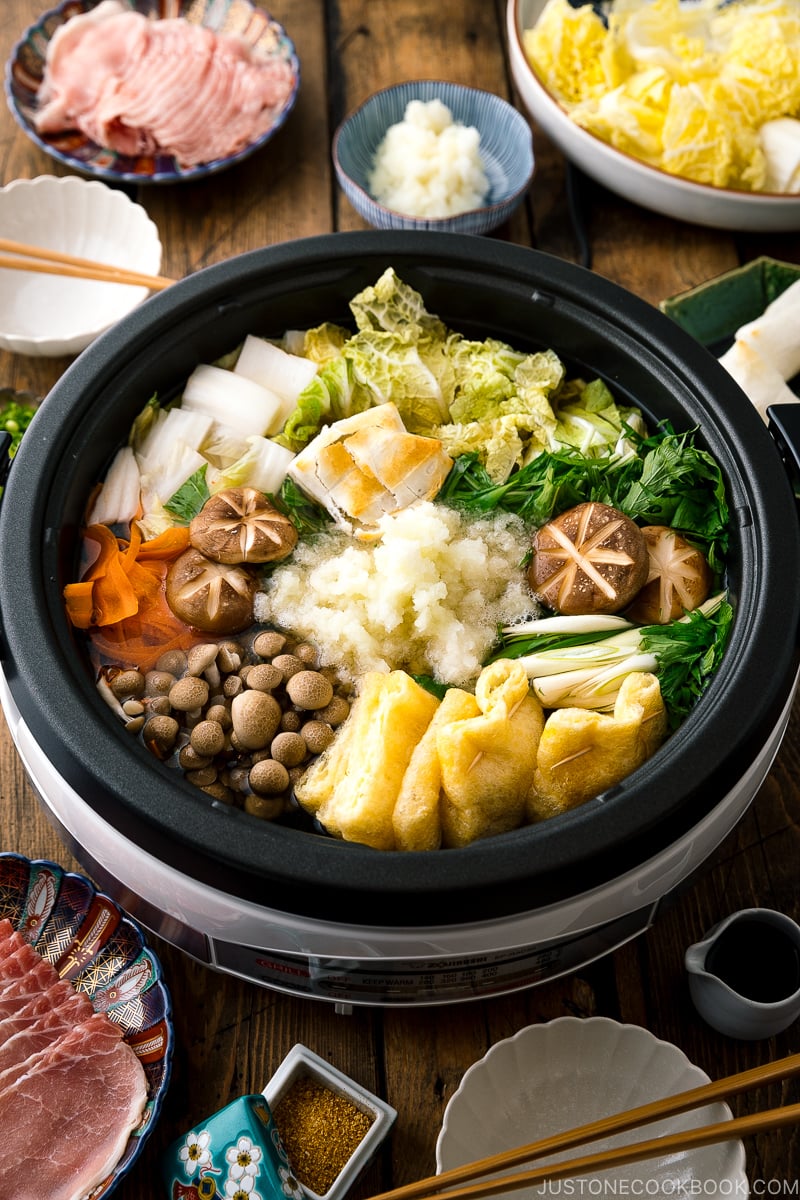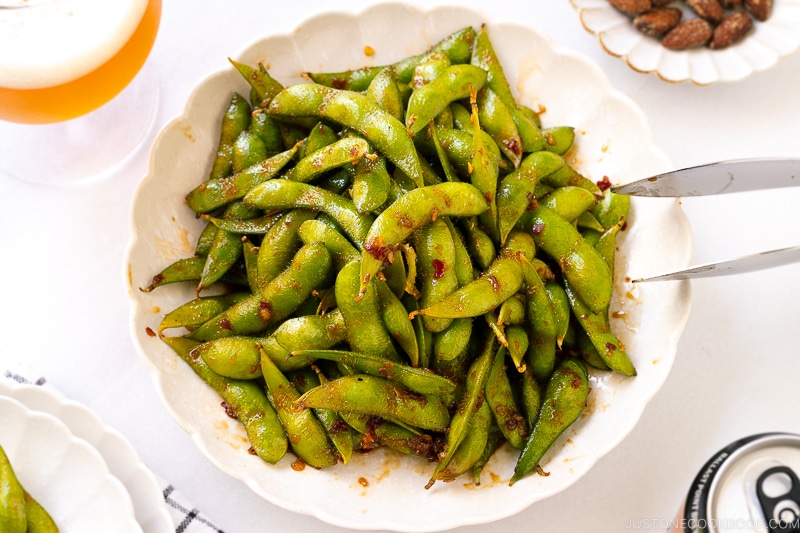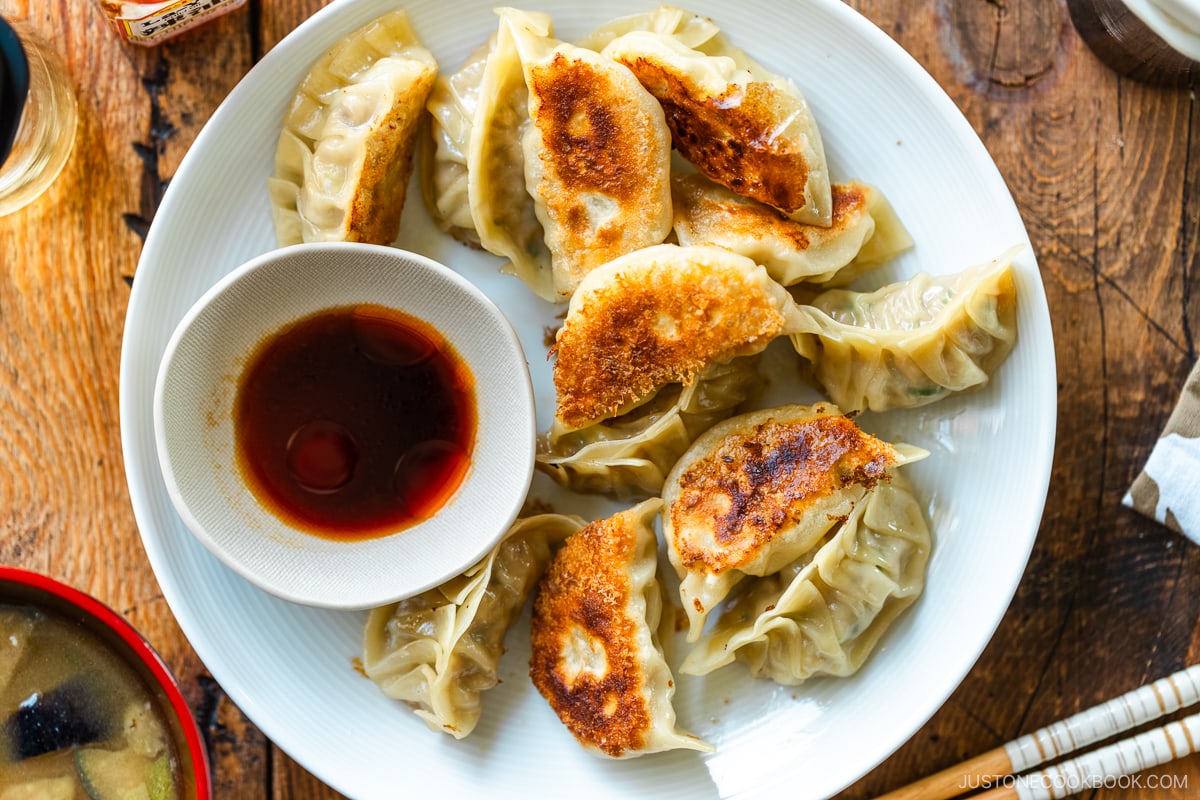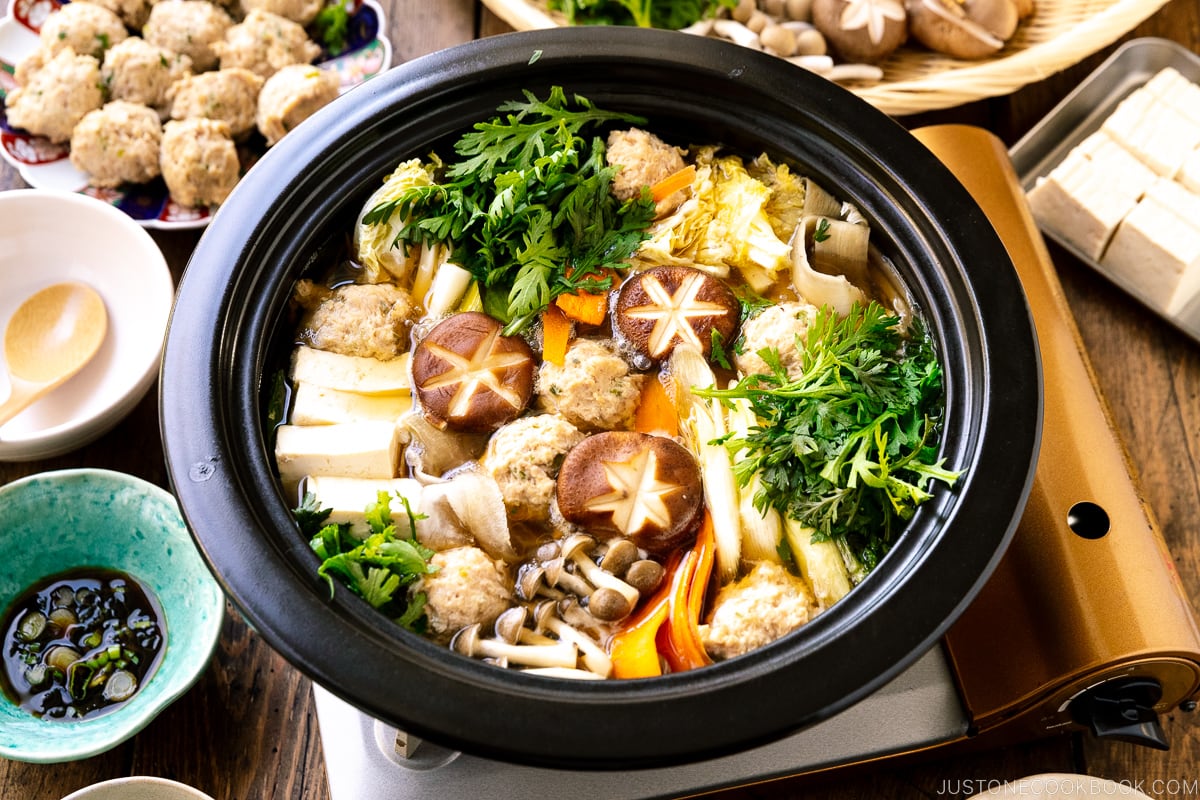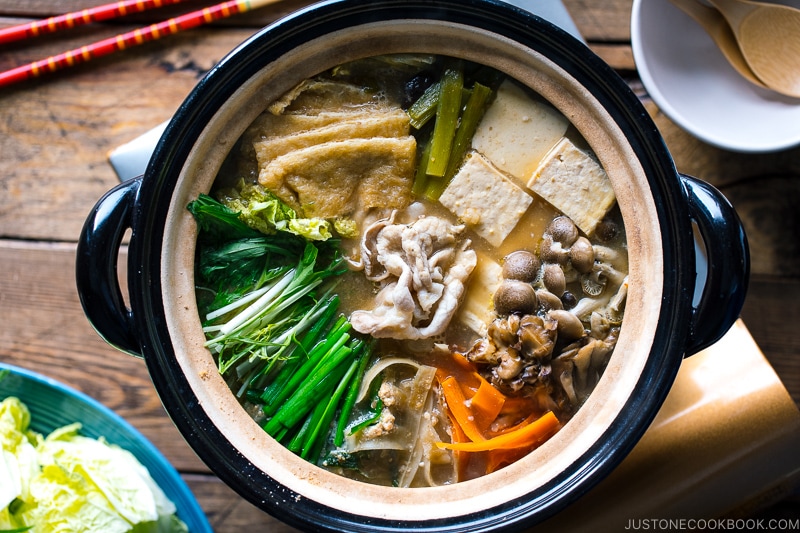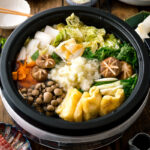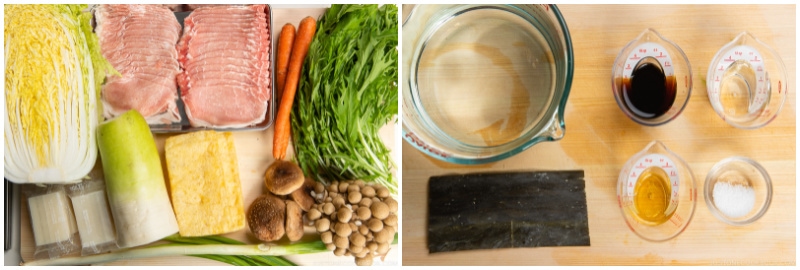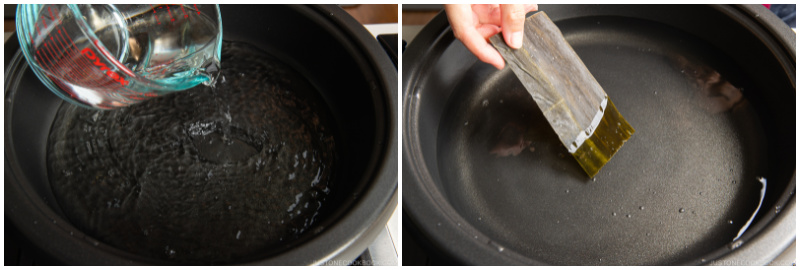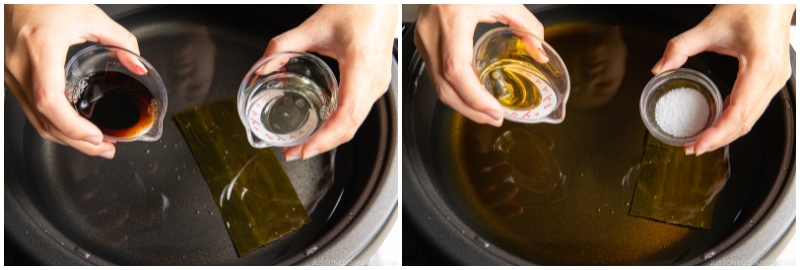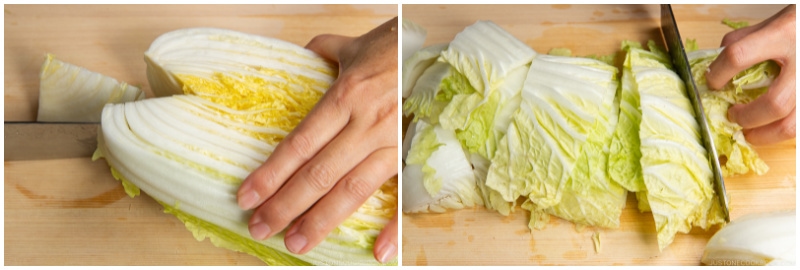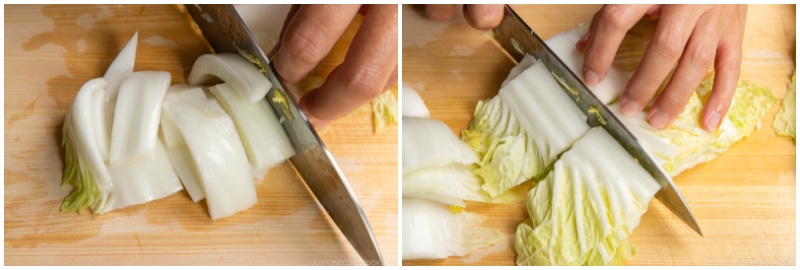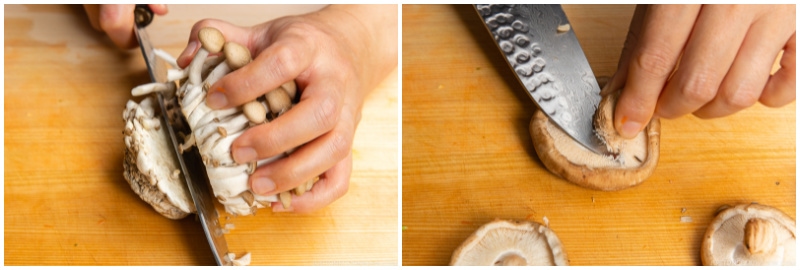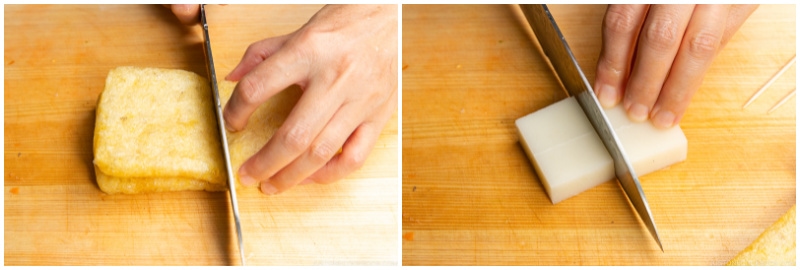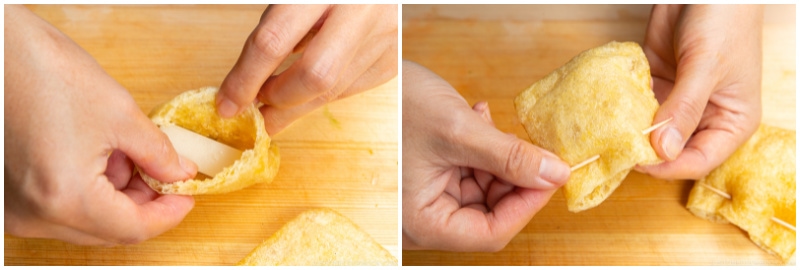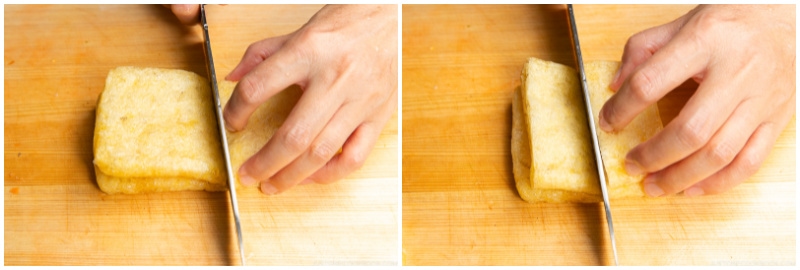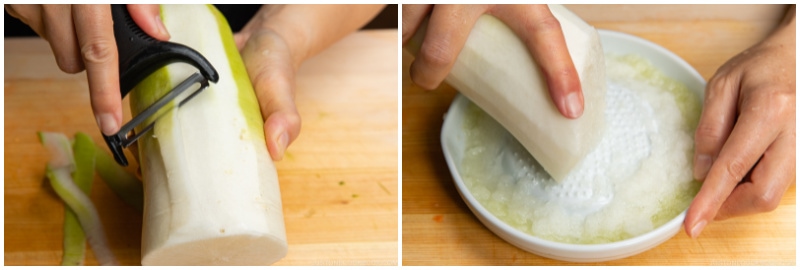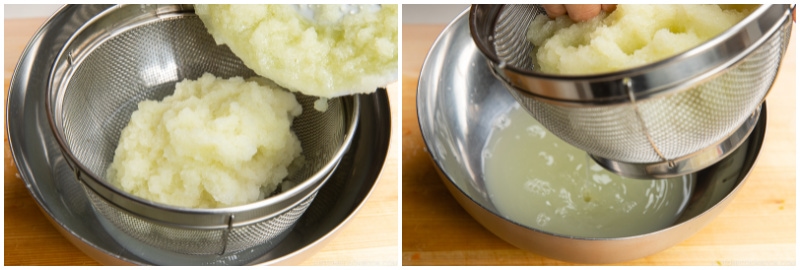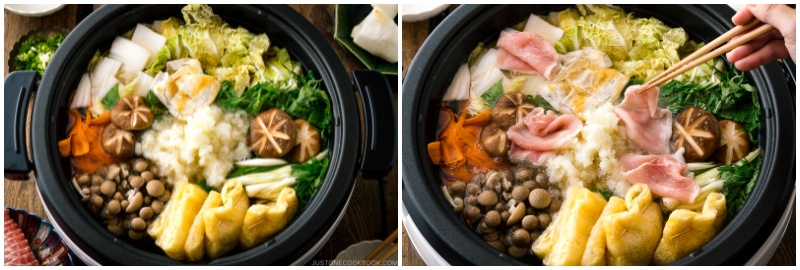How many styles of Japanese hot pots have you tried? You probably tried Shabu Shabu, Sukiyaki, Yosenabe, and maybe Soy Milk Hot Pot. Are you ready to add another new favorite to your lineup? Let’s try Mizore Nabe! We’re going to grate lots of daikon radish for this recipe!
Ingredients for Mizore Nabe
Veggies: daikon radish, napa cabbage, carrot, mizuna, negi (long green onion) Meat: A typical choice would be thinly sliced pork belly, but I used thinly sliced pork loin for pork shabu shabu Mushrooms: shimeji, shiitake, etc Tofu: aburaage (deep-fried tofu pouch) Mochi: kiri mochi (rice cake) Hot pot broth: kombu dashi, sake, mirin, soy sauce, salt Dipping sauce: ponzu and chopped green onion
Find the printable recipe with measurements below.
Key Equipment
Set up the table by placing a donabe pot or an electric hot pot in the middle. Make sure it’s reachable from every seat.
How to Cook Mizore Nabe
Preparation
Hot Pot Stage 1: Vegetables + Mushrooms
Hot Pot Stage 2: Thinly Sliced Meat
The great thing about cooking meat for a hot pot is we normally use thinly sliced beef or pork that can be cooked in a flash. Here are a few things you need to know before cooking:
How to Prepare the Dipping Sauce
We enjoy the cooked food by dipping it in the ponzu sauce (ポン酢). You can add chopped green onions or shichimi togarashi (Japanese seven spice) for spicy kicks.
Nami’s Recipe Tips
Defrost your meat overnight – Thinly sliced meat is so hard to separate! If you purchase frozen meat, make sure it is thawed completely overnight in the refrigerator.
Get thick and big daikon radish – Daikon radish is in season during wintertime, and you can easily find thick, fat, big daikon at the markets. The greenish top of the daikon, right under the leafy parts, is the sweetest part of the daikon. When you are at a grocery store, make sure to pick a good one! The amount of enzyme contained in daikon radish is said to be one of the highest among vegetables. Why enzyme is good? You can read more here.
Use “Oni Oroshi” (Demon Grater) – There is a special grater for grating daikon in Japan, and it’s called oni oroshi (鬼おろし), or a demon grater. The blade is coarser and more jagged than a normal grater, and it got its name because it looks like a demon’s tooth. The grater is typically made of bamboo and comes in a triangular fan or rectangular shape. With coarser blades, the oni oroshi does a better job in grating daikon, yielding a fluffy, airy texture. Usually, grated daikon contains a lot of moisture (juice), but with the oni oroshi, you’ll have less moisture escaping from the daikon. The grated daikon is known to have less spiciness when you use the oni oroshi for the task.
Drain the daikon liquid – Because I don’t use the oni oroshi, it releases a lot of water when I grate it. (It’s truly unfortunate, hence, it’s worth getting an oni oroshi!) The excess moisture will dilute the broth, so you must gently squeeze out the water. You don’t have to hard press it.
Variations and Customizations
Use what’s in the fridge. Besides the typical hot pot ingredients, be creative and use what’s in the fridge, if you have to! My favorite hot pot add-on. One of my favorite special additions to throw into the mix is kiri mochi, a Japanese rice cake, for added texture. I typically stock up on kiri mochi around the Japanese New Year, and the hot pot is a lovely way to use up all the mochi. Vegan/vegetarian version. I used kombu dashi to make a vegan/vegetarian-friendly broth. Kombu is dried kelp, a type of seaweed, that contains a ton of umami, so you won’t miss the flavors! Simply leave out the sliced pork for a vegan or vegetarian hot pot.
What to Serve with Mizore Nabe
I’d like to suggest serving some appetizers and sides like Spicy Edamame, Karaage, Agedashi Tofu, Spinach Salad, and Gyoza so people can enjoy them while waiting for the hot pot to finish cooking. For beverages, sake or shochu is a wonderful choice, and mugicha or barley tea for a non-alcoholic.
Storage and Reheating Tips
To store: Once Mizore Nabe is cooled to room temperature, store it in an airtight container and refrigerate immediately for up to 2 days.
To freeze: You can store it in the freezer for up to a month, but remove the tofu as it will change its texture.
To reheat: Thaw it in the refrigerator overnight. Warm it thoroughly on medium heat over the stove.
More Japanese Hot Pot Recipes You’ll Enjoy
If you love this Mizore Nabe recipe, you’re in for a treat with these other irresistible hot pot recipes.
Tsukune Hot Pot Sesame Miso Hot Pot Kimchi Gyoza Nabe
